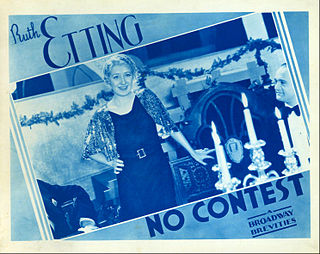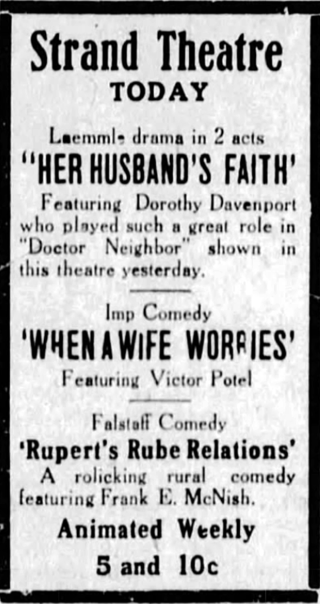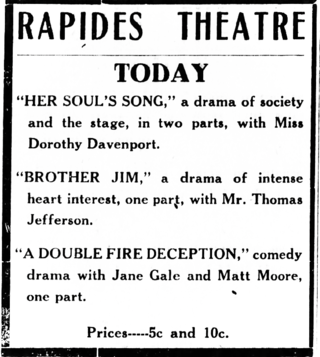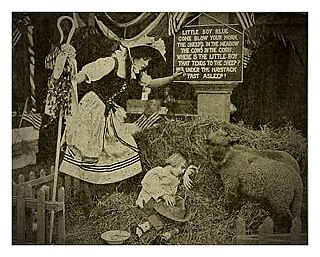Plot
This article needs a plot summary.(January 2024) |
| August Weekend | |
|---|---|
| Directed by | Charles Lamont |
| Written by | Faith Baldwin Paul Perez |
| Produced by | George R. Batcheller |
| Starring | Valerie Hobson Paul Harvey G. P. Huntley |
| Cinematography | M.A. Anderson |
| Edited by | Roland D. Reed |
Production company | |
| Distributed by | Chesterfield Pictures |
Release date |
|
Running time | 62 minutes |
| Country | United States |
| Language | English |
August Weekend or August Week End or Week-End Madness [1] is a 1936 American drama film directed by Charles Lamont and starring Valerie Hobson, Paul Harvey and G. P. Huntley. [2] The screenplay was adapted by Paul Perez from a story by Faith Baldwin. [3] [4] It was produced by Chesterfield Motion Pictures and distributed by Grand National Distributors. [5]
This article needs a plot summary.(January 2024) |

The Biograph Company, also known as the American Mutoscope and Biograph Company, was a motion picture company founded in 1895 and active until 1916. It was the first company in the United States devoted entirely to film production and exhibition, and for two decades was one of the most prolific, releasing over 3000 short films and 12 feature films. During the height of silent film as a medium, Biograph was the most prominent U.S. film studio and one of the most respected and influential studios worldwide, only rivaled by Germany's UFA, Sweden's Svensk Filmindustri and France's Pathé. The company was home to pioneering director D. W. Griffith and such actors as Mary Pickford, Lillian Gish, and Lionel Barrymore.

Centron Corporation is a defunct industrial and educational film production company, that specialized in classroom and corporate 16mm films and VHS videocassettes. A slightly smaller company than its contemporaries such as Encyclopædia Britannica Films, Coronet Films and Learning Corporation of America, it was very successful from the late 1940s through the early 1990s, gaining added fame with the Academy Award-nominated Leo Beuerman in 1969.

Don Juan is a 1926 synchronized sound American romantic adventure film directed by Alan Crosland. It is the first feature-length film to utilize the Vitaphone sound-on-disc sound system with a synchronized musical score and sound effects, though it has no spoken dialogue. The film is inspired by Lord Byron's 1821 epic poem of the same name. The screenplay was written by Bess Meredyth with intertitles by Maude Fulton and Walter Anthony.
This is a listing of all the animated shorts released by Warner Bros. under the Looney Tunes and Merrie Melodies banners between 1930 and 1939, plus the pilot film from 1929 which was used to sell the Looney Tunes series to Leon Schlesinger and Warner Bros. A total of 270 shorts were released during the 1930s.

I'll Name the Murderer is a 1936 American crime film produced by C.C. Burr for Puritan Pictures, directed by Raymond K. Johnson and starring Ralph Forbes, Marion Shilling and Malcolm McGregor. The story and screenplay was written by Phil Dunham with special dialogue by Edwin K. O'Brien, and the film was released January 27, 1936. This was Schilling's last film.
In the Name of the Law is a 1922 American silent melodrama directed by Emory Johnson with Dick Posson acting as assistant director. FBO released the film in August 1922. The film's "All-Star" cast included Ralph Lewis, Johnnie Walker, and Claire McDowell. The cast also included Johnson and his wife, Ella Hall. Emilie Johnson, Johnson's mother, wrote both the story and screenplay. In the Name of the Law was the first picture in Johnson's eight-picture contract with FBO.

Bluebeard's 8th Wife is a 1923 American silent romantic comedy film produced by Famous Players–Lasky and distributed by Paramount Pictures. It was directed by Sam Wood and stars Gloria Swanson. The film is based on the French play La huitième femme de Barbe-Bleue by Alfred Savoir which is based on the Bluebeard tales of the 15th century. The play ran on Broadway in 1921 starring Ina Claire in the Swanson role.

Vitaphone Varieties is a series title used for all of Warner Bros.', earliest short film "talkies" of the 1920s, initially made using the Vitaphone sound on disc process before a switch to the sound-on-film format early in the 1930s. These were the first major film studio-backed sound films, initially showcased with the 1926 synchronized scored features Don Juan and The Better 'Ole. Although independent producers like Lee de Forest's Phonofilm were successfully making sound film shorts as early as 1922, they were very limited in their distribution and their audio was generally not as loud and clear in theaters as Vitaphone's. The success of the early Vitaphone shorts, initially filmed only in New York, helped launch the sound revolution in Hollywood.

Broadway Brevities are two-reel musical and dramatic film shorts produced by Warner Bros. between 1931 and 1943. The series continued as Warner Specials in later years.

Roaring City is a 1951 American crime film produced and directed by William Berke and starring Hugh Beaumont, Edward Brophy and Richard Travis. It was distributed by the independent Lippert Pictures as a second feature intended for television as well as the cinema.

The Right to Be Happy is an American silent film from 1916 that draws inspiration from Charles Dickens' 1843 Novella, A Christmas Carol. This film was Universal's first attempt at making a Feature film based on Dickens' novella. Throughout the silent era, it stood as the first and only feature film adaptation of A Christmas Carol by an American or foreign film company. The movie was directed by Rupert Julian and supported by a cast of Universal Bluebird players, including Rupert Julian, Claire McDowell, and Harry Carter.

Benjamin Bowles Hampton (1875–1932) was an American film producer, writer, and director. He led a 1916 plan to conglomerate film companies via acquisition. He was married to actress Claire Adams and was a partner in Zane Grey Pictures. He wrote the History of the American Film Industry from Its Beginnings to 1931. He is credited with producing numerous films.
Maie B. Havey, born Marie Judge, was an American screenwriter active during the earliest years of Hollywood. During her decade in the industry, she is credited with 70 screenplays.

Her Husband's Faith is a 1916 American silent short film directed by Lloyd B. Carleton. The film is based on a story by Paul Machette. Eugene De Rue developed the screenplay. This domestic society drama's features Dorothy Davenport, T. D. Crittenden and Emory Johnson.

Her Soul's Song is a 1916 American silent short film directed by Lloyd B. Carleton. The film is based on a story by Betty Schade. Calder Johnstone developed the screenplay. This drama's features Dorothy Davenport and Emory Johnson.

Ottalie Mark was an American musicologist, copyright consultant, composer, and music editor.

Little Boy Blue is a 1912 silent one-reel film produced by Lubin Manufacturing Company and distributed by the General Film Company. The movie was released on May 6, 1912. The movie featured child actor Raymond Hackett assuming the role of Harold and Marie Wierman playing Elizabeth, Harold's older sister.